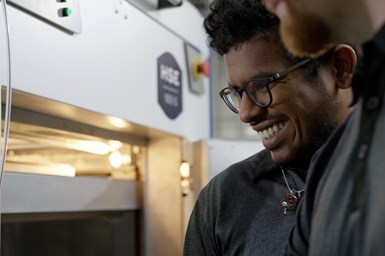Essentium Research Highlights Positive Impact of 3D Printing on Reducing Carbon Emissions
The “Trends in 3D Printing at Scale” white paper summarizes the results of a third-party industry report that surveyed 170 managers and executives working at manufacturing companies with responsibility for 3D printing.
Findings from independent research financed by Essentium indicate the positive impact of 3D printing on reducing carbon emissions. As companies grapple with supply chain challenges, a growing number are adopting sustainable manufacturing approaches, including recyclable materials, reduced energy consumption and more.
The research commissioned by Essentium reveals that 94% of manufacturers are actively engaged in initiatives to reduce carbon emissions, with 53% reporting mature and strategic programs in place. The findings are included in the “Trends in 3D Printing at Scale” white paper, which summarizes the results of the third-party industry report which surveyed 170 managers and executives working at manufacturing companies with responsibility for 3D printing.
The study highlights that 86% of manufacturers with carbon reduction initiatives report positive impacts from this technology. Manufacturers cite numerous benefits, including reduced waste (40%), shorter supply chains (36%), elimination or minimization of overruns (33%), decreased carbon footprint for parts transportation (31%), lower overall carbon emissions (30%), streamlined logistics requirements (28%) and optimized storage footprints (27%).
The study further reveals that almost 98% of manufacturers consider 3D printing vital for their carbon reduction initiatives, underscoring the significant role this technology plays in driving positive environmental change.
“This research highlights the 3D printing’s capacity to manufacture products in a much more eco-friendly way,” says Nirup Nagabandi, Ph.D., Essentium vice president of materials and process engineering. “Specifically, we are working with customers and partners to transform the manufacturing industry by enabling efficient production methods that reduce waste, cut energy consumption and eliminate transportation emissions. That’s the exciting and sustainable vision of 3D printing.”
It is said the inherent advantages of 3D printing enable manufacturers to achieve these sustainable outcomes. By leveraging additive manufacturing (AM) techniques, companies can significantly reduce material waste compared to traditional subtractive processes. Furthermore, localized production through 3D printing reduces reliance on complex supply chains, leading to decreased transportation requirements and overall carbon emissions.
The findings of this research highlight the pivotal role of 3D printing in supporting carbon reduction initiatives. Essentium says it remains committed to driving innovation in AM and empowering manufacturers to enhance operational efficiency while contributing to a greener future.
Report findings also indicate faster time to market and improved part performance ranked as the top business drivers for growth in 3D printing at scale. Also, 71% of respondents used 3D printing to address supply chain issues with all of those reporting that it was an effective approach. Meanwhile, 99% of those surveyed say certified materials are important.
- Learn about Essentium’s polycarbonate material which withstands extreme cold temperatures. The Altitude polycarbonate (PC) material can be used on any open-source 3D printer, enabling users to rapidly produce parts that can withstand cold temperatures on-demand — saving money, reducing waste and streamlining supply chains.
- Read about Essentium’s EPOD on-demand additive manufacturing service. Essentium says its Parts On Demand (EPOD) unlocks access to innovative AM technologies to boost speed, scale and cost-efficiency for parts production.
Related Content
-
Sustainable Furniture Company Model No. Maintains Product Focus with Switch from DIY to Industrial 3D Printers
The startup founded in 2018 has matured in its product offerings as well as its manufacturing equipment, moving from homegrown 3D printers to industrial large-format machines.
-
Alquist 3D Looks Toward a Carbon-Sequestering Future with 3D Printed Infrastructure
The Colorado startup aims to reduce the carbon footprint of new buildings, homes and city infrastructure with robotic 3D printing and a specialized geopolymer material.
-
Next-Gen Horse Trailers to Be Built With Robotic 3D Printing
Double D Trailers is currently developing a prototype horse trailer that will be made with large-format additive manufacturing. The technology brings potential benefits for labor, weight and design features to this subset of recreational vehicles.















